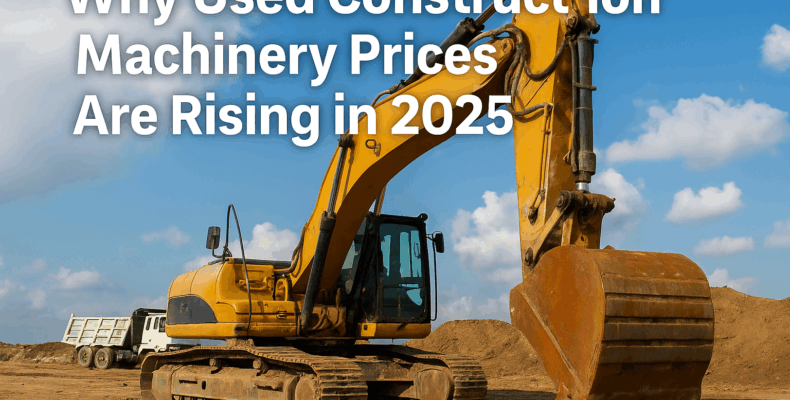The global construction equipment market is shifting rapidly. In 2025, used machinery prices are seeing a sharp increase. Many overseas buyers are asking the same question: Why now?
Let’s break down the key reasons for this trend and explain why Japanese used machinery remains a smart investment—despite higher prices.
1. Surging Global Demand from Developing Nations
Countries across Africa, Southeast Asia, and Latin America are experiencing construction booms. As infrastructure projects grow, so does the need for affordable, durable equipment.
While new machinery is ideal, many governments and businesses turn to high-quality used Japanese machinery to reduce costs. Consequently, global competition has intensified.
Especially in places like Kenya, Tanzania, Uganda, and the Philippines, used excavators, bulldozers, and wheel loaders are in extremely high demand.
2. Reduced Supply of New Equipment
Global supply chains are still recovering from years of disruption. Chip shortages, raw material delays, and limited factory output have affected new machine availability.
As a result, buyers who cannot wait for new units are switching to used machines.
This increased interest in Japanese used machinery, known for its long life and reliability, is pushing up prices.
3. Strong Reputation of Japanese Construction Equipment
Brands like Komatsu, Hitachi, and Kobelco have built a global reputation. Their machines often remain operational for decades with proper care.
So, even used machines from Japan are considered safe, reliable, and valuable—especially when reconditioned and exported by trusted dealers.
For reliable exporters, explore the Top 5 Trusted Japanese Used Truck Exporters for Global Buyers. These companies also handle construction machinery, tractors, and more.
4. Higher Domestic Demand in Japan
Interestingly, Japan’s own domestic demand for used construction machinery is also rising.
Due to aging rural infrastructure and government-backed rebuilds, domestic contractors are keeping more machines in-country. This reduces available export inventory.
With less supply and more global demand, the price naturally climbs.
5. Shipping & Export Costs Are Still Elevated
Though shipping costs have dropped from their pandemic peak, they remain higher than pre-2020 levels.
Fuel costs, container shortages, and port delays continue to impact global freight. These additional costs are often passed to buyers through increased machinery prices.
6. Currency Fluctuations Add Pressure
The strength of the Japanese Yen also plays a role. A weak yen makes exports more attractive to foreign buyers, increasing demand. However, if the yen gains strength, prices for overseas customers will rise even more.
So now might actually be the best time to buy—before further currency shifts.
How Buyers Can Still Win
Even in this rising market, buyers can make smart decisions:
-
Act early: Prices are unlikely to drop soon.
-
Work with trusted exporters: They can provide well-maintained, fairly priced equipment.
-
Focus on total cost of ownership: Japanese machinery often has lower long-term maintenance costs.
Additionally, reconditioned machines often offer near-new performance at far better value.
Conclusion: Value Remains Despite Rising Prices
Used Japanese construction machinery is becoming more expensive—but it’s still a smart choice. Durability, reliability, and global parts availability make these machines worth the investment.
Stay ahead of the curve and explore reputable suppliers. Begin your search here:
👉 Top 5 Trusted Japanese Used Truck Exporters for Global Buyers
